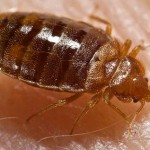Blood-Sucking Bugs plaguing South Americans
One of the major public health problems in some parts in South America is the infestation of blood-sucking bugs (Triatoma bugs). Scientists have conducted a study to analyze the distribution and abundance of the bugs depending on location of the infestation. In a survey conducted among 327 inhabited house compounds, 45.9% were infested.
Bugs were found in kitchens, storerooms, domiciles and chicken nests and coops due to adequate animal hosts available. These blood-sucking bugs feed on poultry, dogs, cats and even humans. Domiciles or houses made from mud are mostly infected by bugs but brick and cement made houses were also found out to have been infested as well.
Infestation has worsened for the past years due to inadequate and obsolete insecticides used and also other factors such as building techniques used to build houses and sanitation condition among hosts (animals and human beings). These factors must be tailored to the climatic conditions, local environment and socio-economic characteristics. Infestation of the bugs has already been reduced in Uruguay, Chile and Brazil. The residual insecticide spraying in the Gran Chaco region in Argentina, Bolivia and Paraguay has not suppressed the problem.
Inhabitants of the region comprise of several indigenous ethnic groups with limited or without access to modern infrastructure and sustainable health services. These factors play a vital role in the abundance of various blood-sucking bug species infesting the region.
